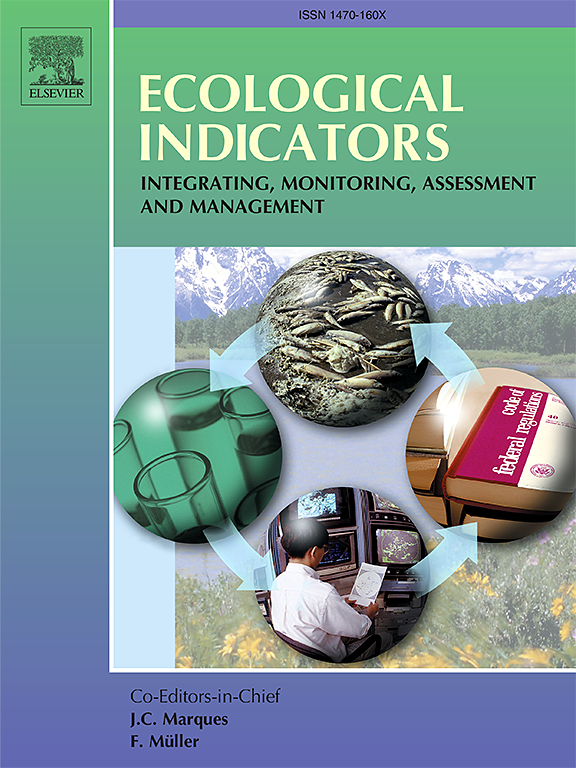Climate controls the global distribution of soil organic and inorganic carbon
IF 7
2区 环境科学与生态学
Q1 ENVIRONMENTAL SCIENCES
引用次数: 0
Abstract
Soil organic carbon (SOC) and inorganic carbon (SIC) are key components of soil carbon, each playing a distinct role in soil health, carbon cycling, and climate regulation. However, their relative distributions across the global lands remains understudied. Here through analysing two data-driven global estimates of SOC and SIC, we found distinct distributions of SIC and SOC along vertical soil depths, among different land covers, soil orders and climate zones. While the density of SOC is higher in top soils, there are more SIC in deep soils. Vegetation shifts the relative distribution of SIC vs. SOC, with the ratio between SIC and SOC () decreasing progressively from bare soils, cropland, grassland to forest. Climate plays a major role in shaping , accounting for 66 % of variations in top soil (0–0.3 m), 65 % in mid soil (0.3–1 m), and 74 % in deep soil (1–2 m). Higher temperature favours the preservation of SIC compared to SOC, as revealed by the positive relationship between and MAT. The close link between key climate variables and the distribution of SIC vs. SOC indicates that future climate change is highly likely to alter the composition of soil carbon. Our finding provides support for differentiated soil carbon preservation strategies under different environment.
气候控制着土壤有机碳和无机碳的全球分布
土壤有机碳(SOC)和无机碳(SIC)是土壤碳的关键组成部分,在土壤健康、碳循环和气候调节中发挥着独特的作用。然而,它们在全球陆地上的相对分布仍未得到充分研究。通过分析两个数据驱动的全球有机碳和有机碳估算值,我们发现有机碳和有机碳沿垂直土壤深度、不同土地覆盖、不同土壤阶数和不同气候带的分布存在显著差异。表层土壤有机碳密度较高,深层土壤碳化硅密度较高。植被改变了碳化硅与有机碳的相对分布,碳化硅与有机碳之比(log10SICSOC)从裸地、农田、草地到森林依次递减。气候起着重要的作用在塑造log10SICSOC,占66%的表层土壤的变化(0 - 0.3),中期土壤(0.3 - 1米),65%和74%在深土(1 - 2米),较高的温度有利于保护SIC与SOC相比,所显示的积极log10SICSOC和垫子之间的关系。关键气候变量之间的密切联系和SIC与SOC的分布表明,未来气候变化极有可能改变土壤碳的成分。研究结果为不同环境下土壤碳保持策略的差别化提供了依据。
本文章由计算机程序翻译,如有差异,请以英文原文为准。
求助全文
约1分钟内获得全文
求助全文
来源期刊

Ecological Indicators
环境科学-环境科学
CiteScore
11.80
自引率
8.70%
发文量
1163
审稿时长
78 days
期刊介绍:
The ultimate aim of Ecological Indicators is to integrate the monitoring and assessment of ecological and environmental indicators with management practices. The journal provides a forum for the discussion of the applied scientific development and review of traditional indicator approaches as well as for theoretical, modelling and quantitative applications such as index development. Research into the following areas will be published.
• All aspects of ecological and environmental indicators and indices.
• New indicators, and new approaches and methods for indicator development, testing and use.
• Development and modelling of indices, e.g. application of indicator suites across multiple scales and resources.
• Analysis and research of resource, system- and scale-specific indicators.
• Methods for integration of social and other valuation metrics for the production of scientifically rigorous and politically-relevant assessments using indicator-based monitoring and assessment programs.
• How research indicators can be transformed into direct application for management purposes.
• Broader assessment objectives and methods, e.g. biodiversity, biological integrity, and sustainability, through the use of indicators.
• Resource-specific indicators such as landscape, agroecosystems, forests, wetlands, etc.
 求助内容:
求助内容: 应助结果提醒方式:
应助结果提醒方式:


